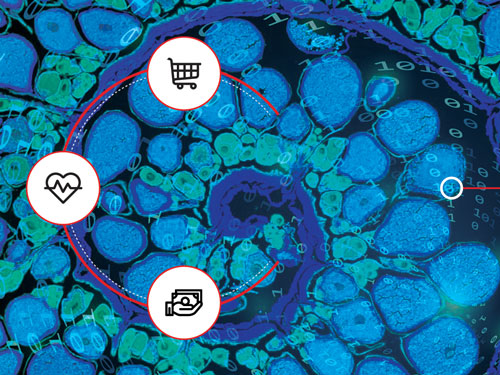
The Era of Agility
Agility is essential to transformation, network efficiency, connection and collaboration in the modern organisation.
Agile transformation. This is more than a buzzword. It’s an opportunity to reshape the organisation to better compete in global markets, thrive in complex times, and overcome uncertainty. The recent McKinsey Global Survey found that agile transformation is gaining ground across multiple sectors and has become a key metric against which high performance, skills development and business outcomes are measured. Organisations focused on agility see measurable returns on this investment with a 30% increase in customer satisfaction, 30% increase in efficiency gains, and a 30% increase in operational performance.
The same value is found in the agile network. As IDC points out, it is agility through connectivity that will help organisations to adapt to the new normal and to remain ahead of disruption and uncertainty. The research firm’s recent survey IDC’s Future of Connectedness found that IT capabilities remain a challenge, and that aligning IT capabilities with business expectations for staying connected is one of the leading concerns outlined by IT teams. Most companies have taken to the cloud over the past two years. The ubiquity woven into the very fabric of cloud makes it an invaluable tool for organisations looking to optimise processes, cut costs and transform productivity. However, this shift demands even more of the network. Stiff, with an ageing backbone, a network can’t deliver to business expectations.
Connectivity is central to achieving agility within the organisation, which means it is one of the core contributors to network agility as a whole, particularly in unprecedented times. The internet, access networks, wireless solutions, security, hybrid working, hybrid cloud – all these factors are essential to helping the organisation build connections that will last and that can handle the demands of the modern business. They also ensure that the business is capable of fully realising the potential of remote and hybrid working frameworks, as well as the value of its cloud infrastructure.
Employees expect high-performance networks that allow them to connect to customers and resources anytime and from anywhere. This is not an unrealistic expectation because it is these connected digital experiences that transform productivity and translate into customer delight. Just as consumers expect their apps, technologies and devices to work seamlessly in virtual worlds and across geographies, so do employees. They want to tap on one device to access information within another application that connects them to the customer that allows them to deliver on their key performance indicators at speed.
Bottlenecks, throttled networks and poor connectivity won’t meet line of business (LoB) or decision-maker expectations. Modern technologies like SD-WAN and SASE are designed to help organisations remain on the path to continuous transformation and to overcome legacy challenges as they are sustainable, customisable and agile enough to flex to meet demand.
Accenture has found that a focus on business agility leads to improved customer satisfaction, faster time to market and better ways of working, collaborating and communicating. These measurable benefits can be found in maintaining a strategic focus on networks, internet and technology.
Transform the network at the pace of the business to ensure it is nimble, scalable and adaptable. Focus on technology that will allow for the business to disrupt and innovate, not inhibit and limit, and that will ensure it squeezes every last drop of value from its cloud investments and infrastructure. Invest in solutions that ensure everyone – from the customer to the employee – can connect everywhere and architect for agile transformation. IT teams should collaborate with third-party managed service providers to transform internet functionality and connectivity by embedding security, accessibility and agility into the very fabric of the network.










